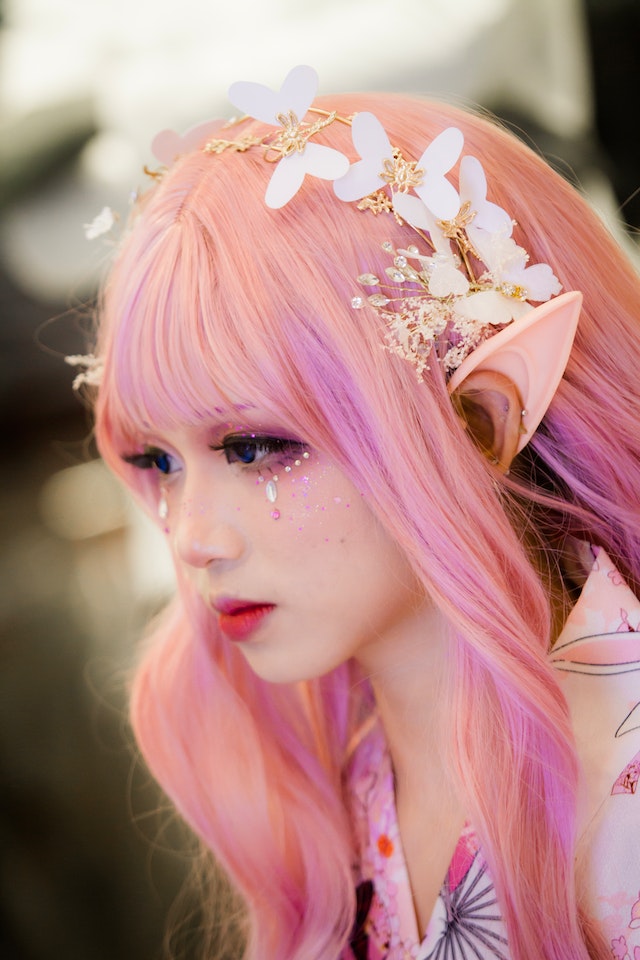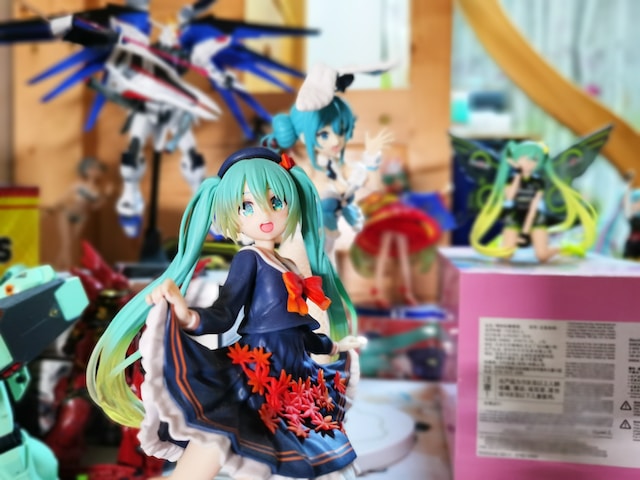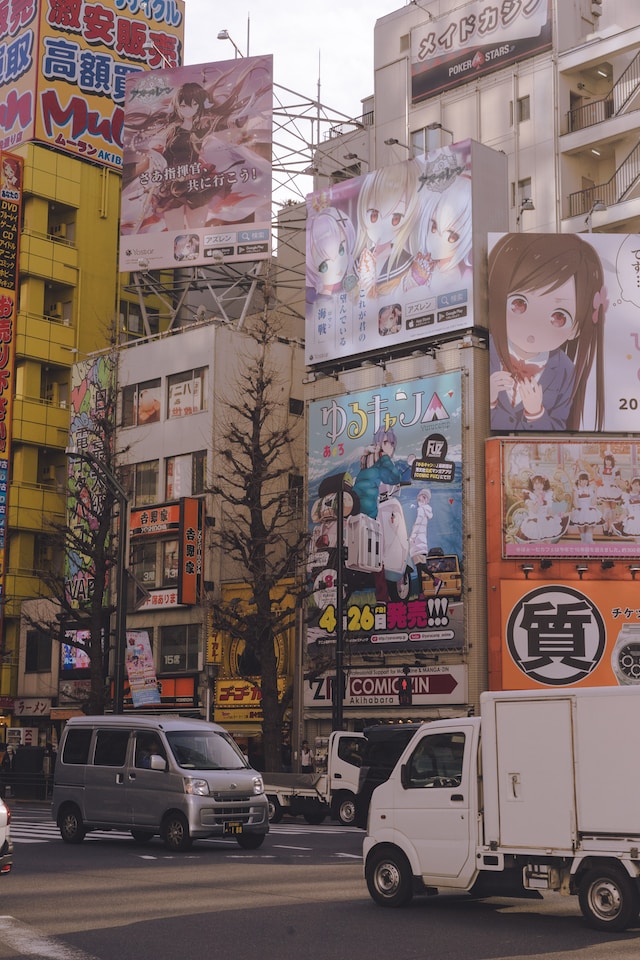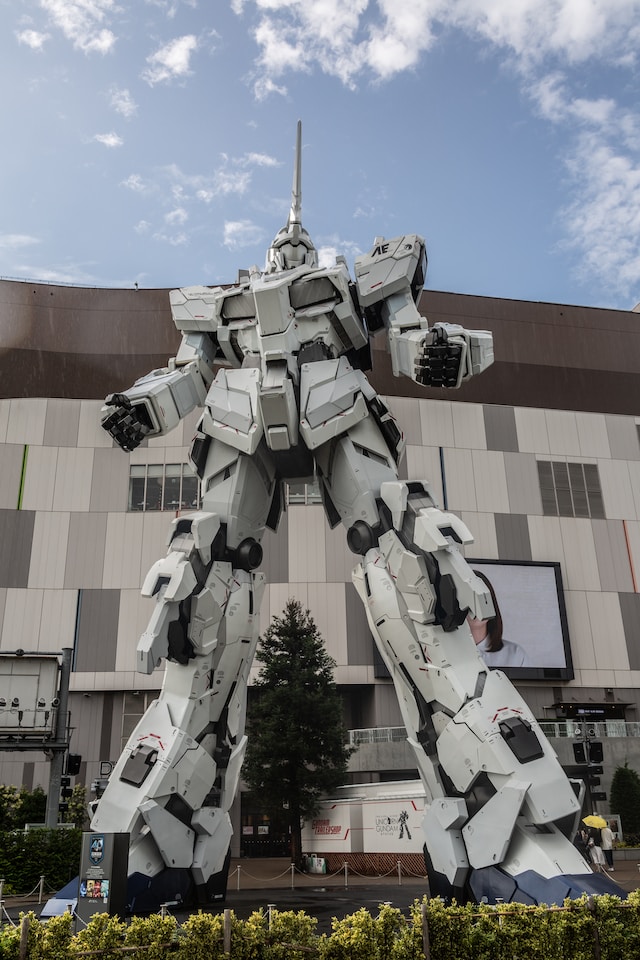
When it comes to Pop Culture, no country is more fascinating than Japan. From anime to manga, music, and video games, Japanese pop culture is known for its unique and eclectic style. So, let’s explore some of the wildest aspects of Japanese pop culture!
First off, there’s anime. Anime is a style of Japanese animation that has taken the world by storm. From classics like Dragon Ball to new hits like Attack on Titan, the colorful characters and intricate storylines have captured the hearts of viewers around the globe.
But anime isn’t the only thing Japan has to offer. Manga, a style of Japanese comic books, is another popular aspect of Japanese pop culture.
These stories range from action-packed adventures to heartwarming romance tales, and have their own massive following both in Japan and internationally.
When it comes to Pop Culture, no country is more fascinating than Japan. From anime to manga, music, and video games, Japanese pop culture is known for its unique and eclectic style. So, let’s explore some of the wildest aspects of Japanese pop culture!
First off, there’s anime. Anime is a style of Japanese animation that has taken the world by storm. From classics like Dragon Ball to new hits like Attack on Titan, the colorful characters and intricate storylines have captured the hearts of viewers around the globe.
But anime isn’t the only thing Japan has to offer. Manga, a style of Japanese comic books, is another popular aspect of Japanese pop culture. These stories range from action-packed adventures to heartwarming romance tales, and have their own massive following both in Japan and internationally.
Japan is also renowned for its video games, with companies such as Nintendo and Sony dominating the industry. Famous games like Super Mario Bros. and Legend of Zelda have become cultural icons, and Japanese game developers continue to push the boundaries with new titles like Persona 5 and Monster Hunter.
Aside from media, fashion is also a major component of Japanese pop culture. From the Harajuku style to the Lolita fashion movement, Japanese fashion has influenced the global fashion industry with bold and unique designs.
Lastly, there’s J-Pop. Japanese pop music has become increasingly popular in recent years, with groups like AKB48 and BABYMETAL gaining international recognition. These catchy tunes, coupled with creative music videos, make for a truly unforgettable experience.
But Japanese pop culture isn’t just limited to these mainstream aspects. The country’s love for all things weird and wacky has led to the rise of niche and subculture trends that are equally amazing. Take, for instance, the trend of maid cafes. These cafes, staffed by young women dressed in maid costumes, offer a unique dining experience where the customers are treated like royalty. The maids put on a cute and charming act, serving food and drinks in a whimsical atmosphere that feels like something out of a fairy tale.
Another lesser-known aspect of Japanese pop culture is the phenomenon of capsule toys, or gachapon. These are small plastic toys that can be found in vending machines all over Japan. Despite their simplicity, capsule toys have evolved over the years to cater to fans of anime, video games, and other pop culture niches. Some of these toys are so sought-after that collectors will pay hundreds of dollars just to complete a full set.

Japan is also home to a plethora of themed cafes and restaurants. From cat cafes to vampire-themed restaurants, every imaginable theme has been turned into a foodie’s paradise. Fans of horror movies can dine in a creepy dungeon-like setting, while fans of all-things-cute and fluffy can pet and play with adorable animals in a cozy tea shop.
Japanese Pop Music (J-Pop)
Japanese pop music, or J-Pop, is a vibrant and energetic genre that has a massive following both in Japan and internationally. J-Pop artists span a wide range of musical styles, from upbeat dance tracks to melancholic ballads.
One key aspect of J-Pop is its emphasis on choreography and performance, with many artists putting on elaborate and visually striking shows that are as much about the spectacle as the music itself. J-Pop has also been heavily influenced by anime and video game culture, with many artists creating tie-in songs and music videos for popular franchises.
And just like with other aspects of Japanese pop culture, J-Pop has its own unique fashion and style trends, with many artists sporting colorful and eccentric outfits that are as much a part of their image as their music. For fans of upbeat and infectious music with a distinctly Japanese flavor, J-Pop is a must-listen.
Japanese Anime
Japanese anime is a form of animation that has become increasingly popular around the world. Its origins can be traced back to the early 1900s, but it wasn’t until the 1960s that anime began to gain mainstream popularity in Japan. From there, it became an integral part of Japanese culture, with anime studios producing hundreds of shows every year.
One of the defining characteristics of Japanese anime is its unique visual style. Anime characters typically have exaggerated features, such as large eyes and spiky hair, and the animation often features vibrant colors and intricate details. Anime also frequently employs tropes and conventions that are distinct from those found in Western animation, such as characters breaking the fourth wall or transforming into powerful forms.
Anime covers a wide range of genres, from action-packed shonen shows like Naruto and One Piece to romantic comedies like Toradora! and Love, Chunibyo & Other Delusions. Many anime series are adapted from popular manga, and some have even gone on to inspire live-action films or video games.
In recent years, anime has gained an ever-growing fanbase outside of Japan. Many shows have been translated into multiple languages and distributed internationally, and there are a number of international anime conventions that attract tens of thousands of fans each year. The success of popular anime like Attack on Titan and Demon Slayer has even led to Hollywood adaptations of some shows.
For fans of animation, Japanese anime offers a unique and exciting viewing experience that is unlike anything found in Western animation. With a massive library of shows to choose from, there’s something for everyone to enjoy.

Video Games and Gaming Culture
Video games hold a special place in Japanese pop culture, captivating players with their immersive worlds, captivating storylines, and innovative gameplay. From the early days of arcade cabinets to the contemporary era of console and mobile gaming, Japan has been at the forefront of the industry, producing some of the most iconic and influential games of all time.
Console Gaming Giants:
Japanese companies like Nintendo and Sony have left an indelible mark on the gaming landscape. Nintendo’s Super Mario Bros. franchise revolutionized the platforming genre and introduced beloved characters like Mario, Luigi, and Princess Peach. Sony’s PlayStation consoles set new standards for home gaming, with iconic titles such as Final Fantasy and Metal Gear Solid captivating players worldwide.
Role-playing Adventures:
Role-playing games (RPGs) are a cornerstone of Japanese gaming culture, offering deep narratives, intricate character development, and immersive worlds. The Final Fantasy series, created by Square Enix, has captured the hearts of millions with its epic stories and breathtaking visuals, while the Dragon Quest franchise has become a gaming institution, defined by its charming art style and captivating quests.
Cutting-edge Innovation:
Japanese game developers are known for pushing the boundaries of gaming technology. The acclaimed Metal Gear Solid franchise, created by Hideo Kojima, introduced stealth gameplay and cinematic storytelling to a whole new level, blending action and espionage seamlessly. The Legend of Zelda series, developed by Nintendo, continuously reinvents itself with each installment, offering players vast open worlds to explore and challenging puzzles to solve.
Mobile Gaming Revolution:
Japan is at the forefront of the mobile gaming revolution, with games like Puzzle & Dragons and Monster Strike becoming global sensations. These mobile games often combine elements of RPGs, puzzle-solving, and multiplayer interactions, providing gamers with bite-sized experiences that can be enjoyed anytime, anywhere.
Esports and Competitive Gaming:
Japan has also embraced the world of esports, with professional gaming competitions becoming increasingly popular. Games like Street Fighter and Tekken have drawn massive crowds to tournaments, showcasing the skill and dedication of professional gamers. These events have not only fostered a sense of community among gamers but also opened up new career opportunities in the industry.
Cosplay and Costume Culture
One of the most visually striking and beloved aspects of Japanese pop culture is the vibrant world of cosplay and costume culture. From fans dressing up as their favorite characters at conventions to professional cosplayers creating elaborate and intricate costumes, this subculture has become a global phenomenon.

Cosplay, short for “costume play,” is the practice of dressing up as a character from a particular work of fiction, often from anime, manga, video games, or movies. What sets cosplay apart is the level of detail and dedication that goes into recreating a character’s look, mannerisms, and personality. Cosplayers meticulously craft their costumes and accessories, often spending hours or even months perfecting their creations to showcase at conventions and events.
Conventions – A Gathering of Cosplay Enthusiasts
Anime and comic conventions provide a platform for cosplayers to showcase their talent and share their love for the art form. These events attract thousands of passionate fans who come together to celebrate their favorite series and characters. The conventions feature cosplay contests, where participants compete for prizes based on the accuracy and quality of their costumes. It’s a chance for cosplayers to not only display their incredible creations but also to connect with like-minded individuals and form a sense of community.
Professional Cosplayers – The Masters of their Craft
While many people enjoy cosplay as a hobby, there are also professional cosplayers who have turned their passion into a career. These individuals not only create breathtaking costumes but also often serve as brand ambassadors, appearing at events and promoting various franchises. They are known for their attention to detail, exceptional craftsmanship, and ability to embody the characters they portray. These professionals have elevated cosplay to an art form, inspiring and influencing aspiring cosplayers worldwide.
The Evolution of Cosplay
Over the years, cosplay has evolved both in terms of creativity and accessibility. With the rise of social media, cosplayers can now share their creations with a global audience and connect with fellow enthusiasts from around the world. The community has become more diverse, embracing cosplayers of all ages, genders, and backgrounds. Additionally, cosplay has expanded beyond anime and manga to encompass a wide range of pop culture, including Western comics, sci-fi, and fantasy.
Pop Culture Tourism
For pop culture enthusiasts, Japan offers a treasure trove of experiences that go beyond just consuming media. Pop culture tourism has become a popular trend, attracting fans from around the world who want to immerse themselves in the captivating world of Japanese pop culture firsthand. From visiting iconic anime and manga locations to exploring themed cafes and attending cosplay events, pop culture tourism allows fans to step into the realms they adore. So, let’s take a journey through some of Japan’s pop culture hotspots!
Manga Must-Sees:
For manga enthusiasts, Japan is a treasure trove of must-visit locations. Bookstores like Mandarake and Nakano Broadway in Tokyo offer extensive manga collections, where fans can browse and buy their favorite titles, including rare and limited editions. Manga-themed cafes, such as the legendary Ghibli-themed “Donguri Kyowakoku” or “Café Mugiwara” inspired by the wildly popular “One Piece” series, allow fans to indulge in culinary delights surrounded by the world of their favorite characters. These manga havens are a testament to the influence and richness of Japan’s comic book culture.

Anime Pilgrimages:
Anime pilgrimages have become a significant part of pop culture tourism, where fans travel to real-life locations featured in their favorite anime series. Whether it’s the charming streets of Kyoto depicted in “The Melancholy of Haruhi Suzumiya” or the rural town of Washinomiya Shrine, made famous by the anime “Lucky Star,” these destinations offer a chance to walk in the footsteps of beloved characters. Exploring these locations not only deepens the connection fans have with their favorite shows but also allows them to appreciate the beauty of Japan’s landscapes and architectural wonders.
Themed Cafes and Restaurants:
Japan is renowned for its themed cafes and restaurants, each transporting visitors into a different pop culture realm. Cat cafes, where visitors can enjoy a cup of tea and cuddle with adorable feline companions, offer a relaxing and therapeutic experience for animal lovers. Maid cafes like “Cure Maid Café” and “@Home Café” are unique dining establishments where customers are treated like royalty by charmingly attired maids. Visitors can enjoy delicious food, interact with the staff, and even play games in a whimsical atmosphere reminiscent of anime and manga. These themed establishments provide an opportunity to fully immerse oneself in the fantasy worlds of Japanese pop culture.
Cosplay Festivals and Events:
Cosplay festivals and events are a cornerstone of pop culture tourism in Japan. The most famous of these is the annual Comic Market, or Comiket, held in Tokyo. This massive gathering attracts thousands of cosplayers and fans, who showcase their incredible costumes and participate in photo shoots and parades. Other events, such as AnimeJapan and Tokyo Game Show, offer a chance to see and experience the latest developments in the world of anime, manga, and video games. Attending these events not only allows fans to meet like-minded individuals but also provides an opportunity to interact with industry professionals and discover new and exciting pop culture phenomena.
Japanese pop culture continues to captivate and inspire people from all over the world. From the mesmerizing world of anime and manga, to the exhilarating realm of video games, and the enchanting allure of cosplay and themed cafes, Japan offers an immersive experience that transports fans into a world of creativity and imagination. Whether you’re a die-hard fan or simply curious about the phenomenon, exploring Japanese pop culture is like embarking on a thrilling adventure, where the boundaries of reality blur and the fantastical becomes a reality. So, dive into the world of Japanese pop culture and let your imagination soar!

